Nokia Lumia 630 Review
by Brett Howse on July 22, 2014 8:00 AM EST- Posted in
- Smartphones
- Microsoft
- Nokia
- Mobile
- windows phone
Software
The Lumia 630 is the first phone sold with Windows Phone 8.1. Unlike Android, OEMs can’t customize the actual user experience, so I’ll refer you to Anand’s Windows Phone 8.1 review for the whole story here. What OEMs can do though is add to the user experience with apps including custom camera launchers. This is also the first Lumia for sale with the “Cyan” firmware update, so let’s go through some of what this gives you as well as the Lumia apps.
I’ve already alluded to this in the display section, but the Lumia 630 is the first Lumia to offer a brightness slider, and in this case, three levels due to the lack of an ambient light sensor. The three sliders for low, medium, and high brightness have a slightly different scale, so maxing all three will still give a slightly different maximum brightness. It’s a big improvement over the previous choices of low, medium, high, and auto. In the same settings page, you can also adjust the display saturation and hue if it would so please you.
Being a Lumia, you also get access to the large number of Nokia apps which are generally quite good. Nokia also actively courted some developers, giving earlier access to the apps on Nokia devices. With the 630, you have access to all of these (assuming they don’t require 1 GB of memory of course) and some of the highlights I’ll break out below.
When Microsoft acquired Nokia’s smartphone business, the one thing they weren’t able to purchase outright was the HERE branded navigation information. They do retain rights to access it though, and HERE Maps, HERE Transit and HERE Drive+ are available out of the box on the Lumia 630. All are excellent apps with their own slant on how to display the information depending on the usage model. They also offer offline maps which is a bonus for anyone travelling and wanting to avoid roaming data costs but still have access to quality navigation.
Another app from Nokia is App Folder, which does exactly as you’d think. You can add multiple apps and settings to each folder, and then pin them to your home screen. Before Windows Phone 8.1 I used App Folder for quick access to certain settings such as Bluetooth, but now with the action center I find I don’t use it as much. Still, it adds a feature that’s currently missing from the OS and it works great.
The last Nokia app I’ll discuss is a rather unique one called Device Hub. Device Hub simply scans your network for all of the devices on it, and offers suggestions on apps to connect to each device. As an example, if it detects an Xbox One on your network, it will offer up SmartGlass. If it finds a device that you don’t have any installed apps for, it will display a list of options you can use with that device. When it found my A/V Receiver on my LAN, it recommended several DLNA apps. I think it’s a neat app, but my only issue with it is that it’s tucked away under Settings, rather than being an app available in the app list.
SensorCore
New to the platform is an integrated pedometer, and Nokia branded it SensorCore. It’s not the first smartphone to include such a function, but it’s the first Windows Phone with one built in. There is an API to access the pedometer, but for now the only app which can access your step count is the Microsoft Health and Fitness app. As an app, it follows exactly in the tradition of the once Bing branded apps for Windows Phone, and offers a clean, easy to use interface.
Testing the accuracy of a pedometer isn’t easy, unless you want to actually count your steps for a day. I lost count quickly, so instead I’m comparing it to a FitBit One, which is one of the more popular health and fitness wearables.
I’m not sure if the Lumia was under-reporting steps, or if the FitBit over-reports steps, or if it’s a combination of both, but at no time did the two devices ever end up even close to the same count at the end of any day. My feeling is the FitBit easily falls prey to certain movements which skew the numbers high. Driving seems to really send mine to the moon for instance. On a single day, the FitBit accounted for 9470 steps while the Lumia reported only 6500. I was in the car for around an hour that day, so the Lumia number is likely more accurate. Perhaps if I get another device I can test, I can use three, and hopefully two of them will be somewhat close and we can determine a winner.
There have been a number of smartphones come on the market in the last while with a built in pedometer, so it is nice to see the Lumia 630 include one even in a budget device. Whether or not it gets used is up to the individual buyer, but at least they have that option.


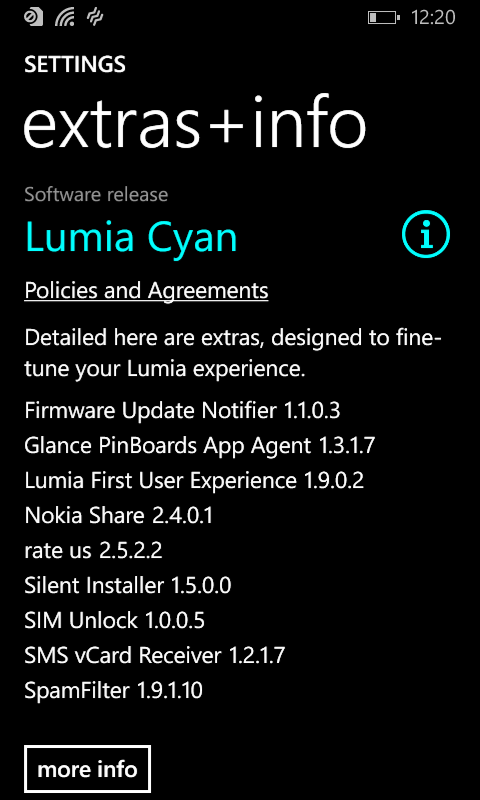
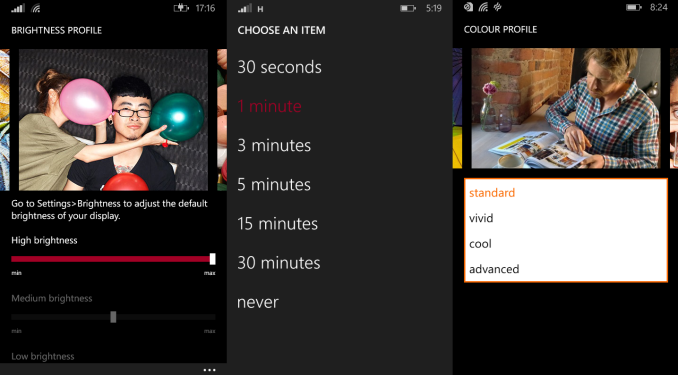
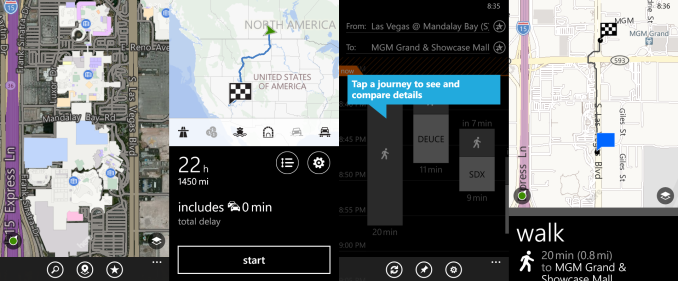
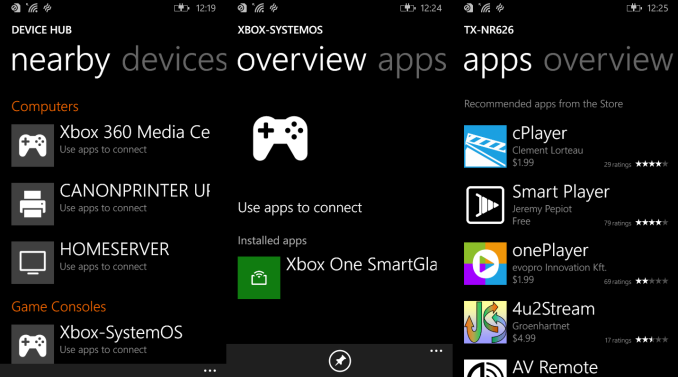
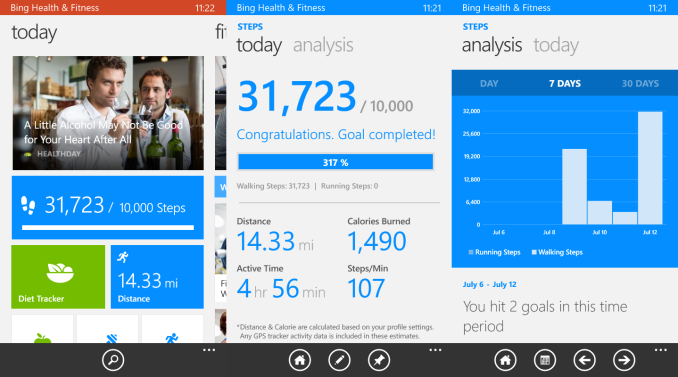








83 Comments
View All Comments
name99 - Tuesday, July 22, 2014 - link
I don't want to turn this into an Apple/MS/Android fight, but WTF is up with those BaseMark OS II memory scores? They certainly suggest something is very broken with the benchmark in some way.Is there any reason to believe that the 630 (a super budget phone) really has an awesome memory subsystem, substantially superior to iPhone 5S, to Android flagships, and vastly superior to the 620?
coachingjoy - Tuesday, July 22, 2014 - link
Nice review.lumia 930/ICON review next please.
Thanks
Rainer - Wednesday, July 23, 2014 - link
Hi Brett, the Lumia 620 features also a 5GHz-band (802.11 "a") as well as a VGA front camera (at least the European models), could you please add this to the Hardware specs in tue table? Thanksaustinsguitar - Wednesday, July 23, 2014 - link
ugh these phones need to get the picture. higher equipment, better battery "that doesn't suck," and a friendly OS that doesn't stray too far to what many are used to.... i just dont think these phones will advance unless these things are met in FULL!Death666Angel - Wednesday, July 23, 2014 - link
Hm, thanks for the review.I would really like to see the resolution added to the display category in the tables. You already have a RAM/ROM space, why not have a diplsay size/resolution space? I haven't found it in the first page or second page tables where it really needs to be. Neither have I seen it while glossing over the article.
As for the phone itself, without a front facing camera and an ambient light sensor, I'd rather spend 30€ more on a Moto G. This really needs to be 109€ tops, not 130€.
SC7 - Thursday, July 24, 2014 - link
Hi also Checkout thisLatest Nokia Lumia 530 - Full Mobile Specification http://bit.ly/1ogA1S0
leopard_jumps - Friday, July 25, 2014 - link
Nokia 630SAR US 1.52 W/kg (head) 1.25 W/kg (body)
SAR EU 1.51 W/kg (head) 1.52 W/kg (body)
i wouldnt buy it .
whatsa - Sunday, July 27, 2014 - link
Pity you did not add the 1520 but just IOS and droid high end.I just amazes me that this BS continues
Why not show the 1520?
well on graphics it kills the competition.
Come on Guys you can do better than this.... disappointed.
Brett Howse - Monday, July 28, 2014 - link
I didn't have a 1520 for comparison is the only reason.operaghost - Wednesday, August 6, 2014 - link
If the 630/635 is the successor to the 520 why wasn't the 520 included in the performance results? It would be nice to see what the new model can do over the old model. Likewise, since I bought my 520 for $50 outright, no contract, and the 630/635 can be had for about $100, why is it being compared to the high end phones? I can see adding perhaps a single high-end for comparison, but I don't expect a $100 phone to beat out a $650 GS5 or iPhone 5S in a performance test. Compare other phones in a similar price range. Let's see the $100 Androids compared to this instead. That makes more sense to me.